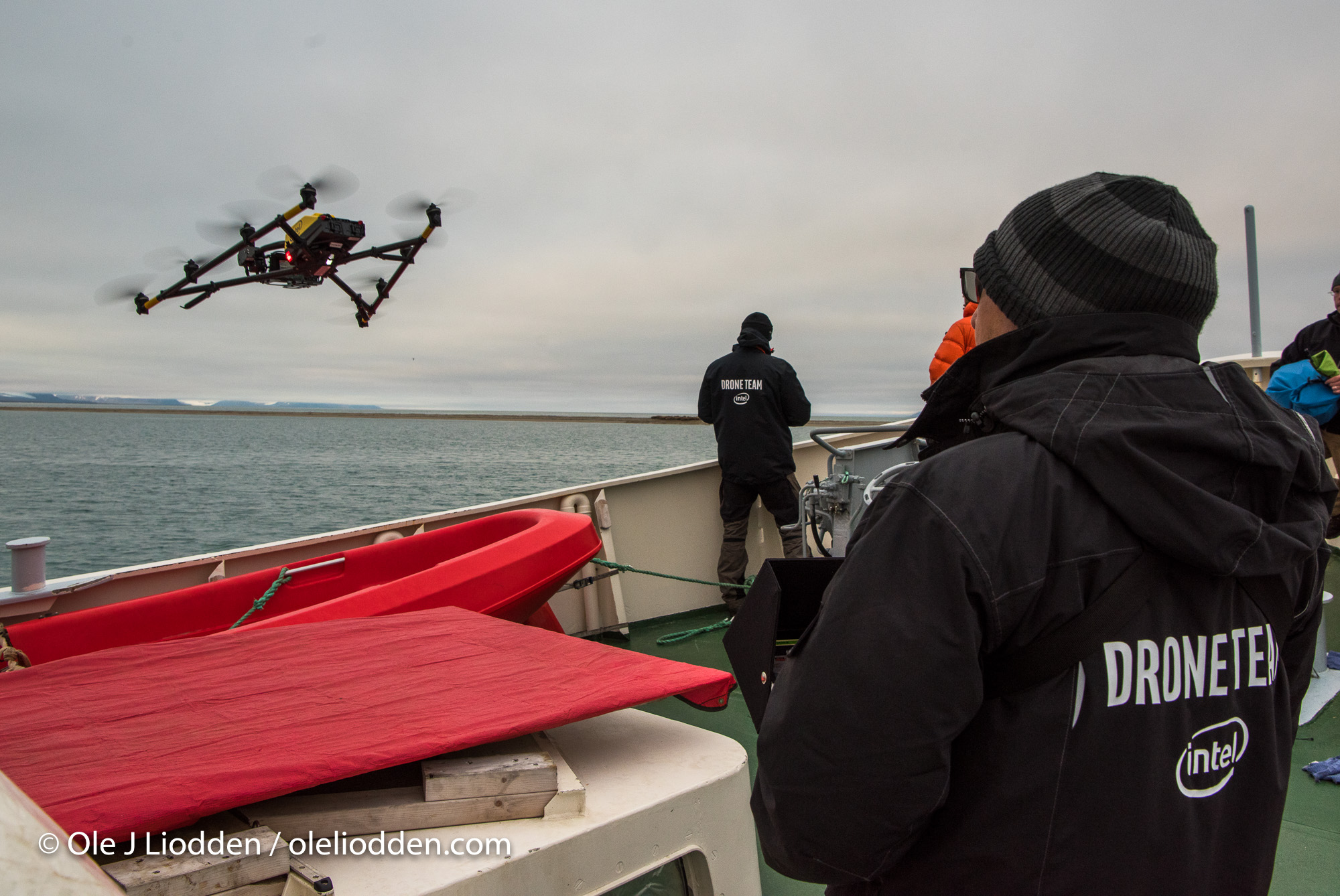Your cart is currently empty!
Drone technology
NON-INVASIVE RESEARCH TECHNOLOGY
[gap size=”25px”] [columnize]
Intel and the Polar Bears & Humans project teamed up in July 2017 for a 5 days expedition to Svalbard testing what we hope will be the next generation of non-invasive technology for polar bear research. This first test was mainly to see how a drone equipped with IR thermal camera and high resolution camera can operate at 80 degree North. We also wanted to test if drones really are non-invasive, and can replace noisy and expensive helicopters in some areas.
[/columnize] [gap size=”50px”]
[gap size=”50px”] [columnize]The test was successful, and the drone had no problems with signals, climate or weather conditions in the Arctic. Even more important, the polar bears could not care less about the drone from a safe distance.
Next step will be to improve the drone with more battery capacity, longer signal range etc. It is also important that the drone can meet the requirements from the researchers so it can be a part of ongoing research programs, and replace helicopters in some sensitive areas – like polar bear denning areas.
I’m thankful for the cooperation with Intel and I hope this is an important step into more non-invasive research technologies, for monitoring and documenting polar bears.
[/columnize]
[gap size=”50px”]

[gap size=”50px”]
External articles about the project: IQ INTEL